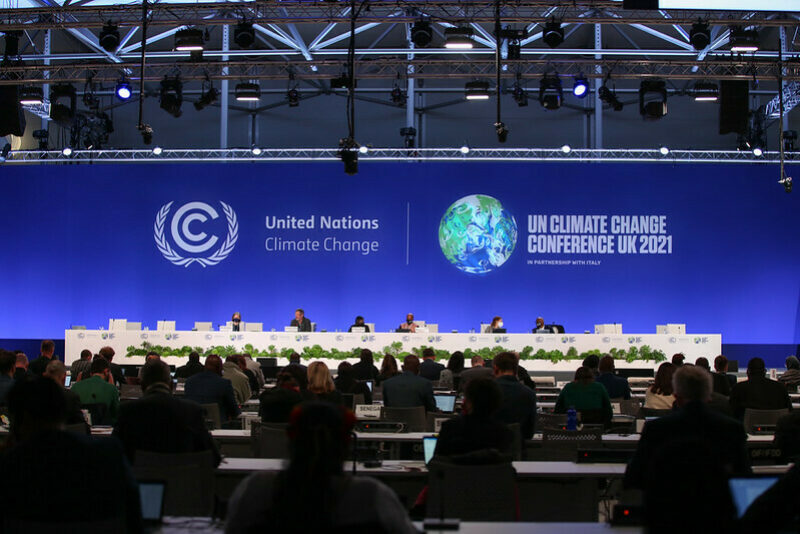Facing the facts – the need for loss and damage finance can no longer be denied
Olivia Serdeczny, Adao Soares Barbosa, Hafij Khan, Sneha Pandey, Doreen Stabinsky
This article takes stock of the Loss and Damage negotiations at COP26, concluding that the need for developed countries to provide Loss and Damage financial support can and will no longer be ignored.
Share

For years, developing countries have been calling for financial support in their efforts to address loss and damage: the unavoidable impacts of climate change that countries cannot adapt to. By the end of COP26, it became clear that the elephant in the room – failure on the part of developed countries to systematically provide Loss and Damage finance – can and will no longer be ignored.
What is loss and damage finance?
Originally, “loss and damage” under the UNFCCC referred to the inevitable impacts of climate change that countries could not reasonably adapt to. Today, and as a result of major political controversies, it means different things to different people. A handful of developed countries tries to keep the issue closely bound to the concept of adaptation – implying that no specific loss and damage finance is required (for an insightful argumentation along those lines see a US representative speak here at 2:14:40). Yet in fact, the Paris Agreement separates loss and damage and adaptation in two distinct articles: Article 7 on adaptation and Article 8 on loss and damage.
Over the past several years it has become even clearer that loss and damage is not the same as adaptation and requires its own funding stream. In a 2019 Technical Paper on sources of financial support relevant for addressing loss and damage, the UNFCCC Secretariat lays out the challenges of tracing or reporting on loss and damage finance that mostly arise from its lack of definition. While this definition remains an issue, Article 9.8 of the Paris agreement provides a legal base to tackle finance for loss and damage under the Financial Mechanism of the Convention and its operating entities.
As climate impacts get more severe, the issue of loss and damage finance is raising its profile. Under the UNFCCC, it has been discussed under the so-called work streams of the Executive Committee of the Warsaw International Mechanism for Loss and Damage (WIM Excom). The activities covered under these work streams occupy a broad spectrum, ranging from risk reduction to recovery from disasters.
Adaptation finance can reduce loss and damage but does not cover all funding needs
Many of the activities that minimize or avert loss and damage – i.e. that are at the risk reduction end of the spectrum – could be eligible for support through adaptation finance. But as the technical paper assessing available support also clearly states, important gaps remain; for example, “supporting the aftermath of the loss of an asset (e.g., productive cropland which has been rendered unproductive) is often not a focus of such finance” (para 67). In other words, there is currently no systematic and predictable funding for developing countries already at the forefront of devastating climate impacts leading to loss and damage.
Financial support for loss and damage must be additional to adaptation funding but also differently structured. For example, for responding to damage caused by extreme weather events, finance needs to be available at short notice.
This is very different from the project-based approach of currently available financial support. Under the Green Climate Fund, for example, it takes around one year from proposal submission to receive the first disbursement of funds.
As of now, there are no funding structures to address permanent loss from slow onset events, such as loss of productive cropland through desertification, salinization, or sea level rise. This is another example of how loss and damage and adaptation finance are qualitatively distinct from each other.
A crunch issue at COP26
The COP25 in 2019 saw some progress made on the topic at a fairly technical level.
Meanwhile as emissions rise, climate impacts get worse, rising to a level worthy of a science fiction drama in 2021. In the lead-up to COP26, it became clear that developing countries would demand a tangible outcome on Loss and Damage finance that would pave the way for actual support to be provided.
In Glasgow, the G77+China coalition stepped forward to demand a separate facility to be established for loss and damage finance as part of what became the Glasgow Climate Pact. The exact details of this facility were to be determined over the coming year, with the facility to be fully finalized at the COP next year.
Unsurprisingly the proposal was met with resistance from developed countries. Loss and damage finance thus became one of the unresolved crunch issues towards the end of the talks.
Finally, developing countries accepted the compromise of establishing the “Glasgow Dialogue between Parties, relevant organizations and stakeholders to discuss the arrangements for the funding of activities to avert, minimize and address loss and damage”. This dialogue will take place during annual subsidiary body meetings, usually held in May or June, for the next three years.
Developing countries made it clear that their accepting the dialogue compromise was premised on the understanding that its conclusion would lead to the establishment of a finance facility that would effectively meet their loss and damage finance needs.
On a parallel negotiations track, countries discussed a “new collective quantified goal on climate finance”. The least developed countries group had demanded for loss and damage to be considered as a separate item of this goal. While this is not reflected in the agreed outcome on the new collective goal, the process set out for refining the goal, including its scope (para 16), clearly leaves the door open for loss and damage finance to be included.
Increasing public awareness
As climate impacts continue to worsen, the need for a loss and damage finance facility will only become ever more apparent. Countries' experiences, including those reflected in biennial transparency reports, collective assessments made under the Global Stocktake, as well as the ever-improving science of attribution will unambiguously make the current gap in financial support ever more apparent.
The topic is gaining momentum also outside the UNFCCC talks. Civil society organizations have started mobilising to call for loss and damage finance and numerous media outlets covered the topic as one of the critical issues at COP26 (e.g. the Guardian, Reuters, the Washington Post – to name but a few English-speaking ones). The Scottish government contributed £1 million to a Climate Justice Resilience Fund for addressing loss and damage.
Finding a collective, sustainable, and effective solution to this undeniable part of the global problem of climate change will eventually also be in the interest of developed countries.
The time for denying the need for loss and damage finance has clearly – and with the outcome of COP26 more or less officially – come to an end.
Header image: Flickr/UNclimatechange (CC BY-NC-SA 2.0 DEED)













